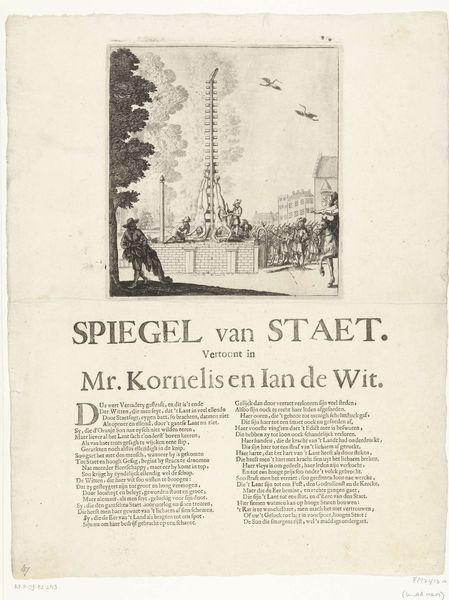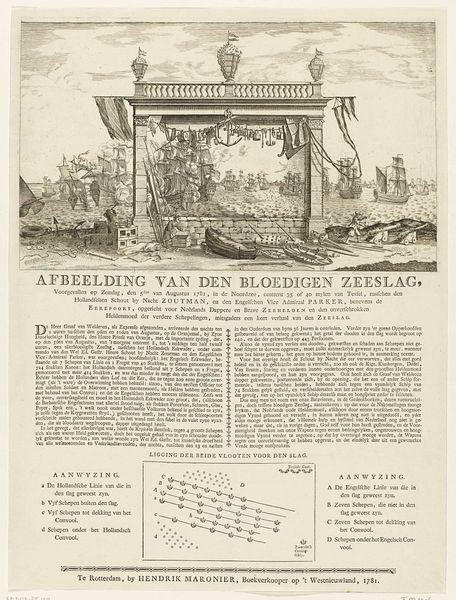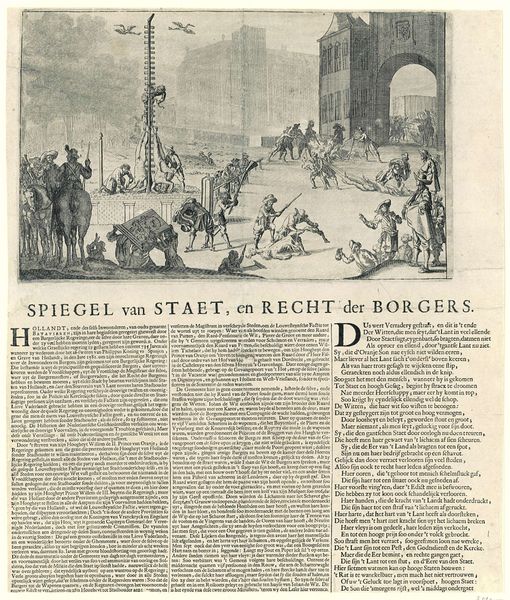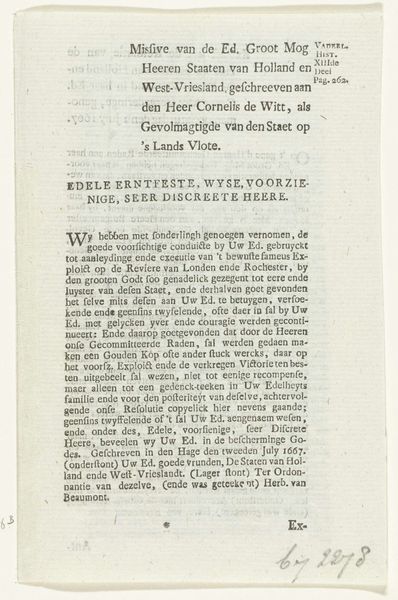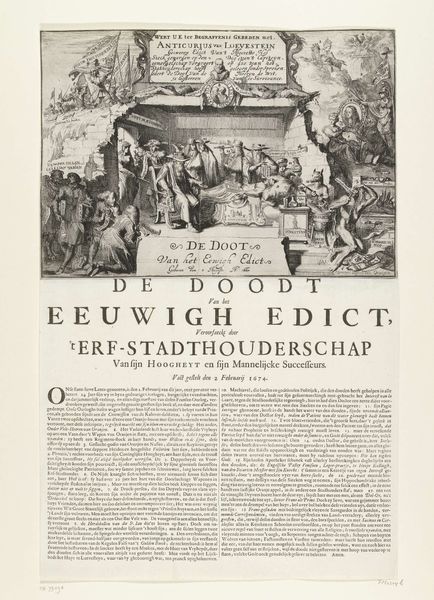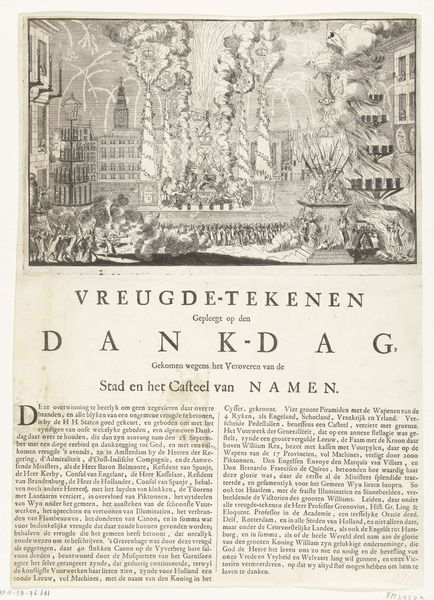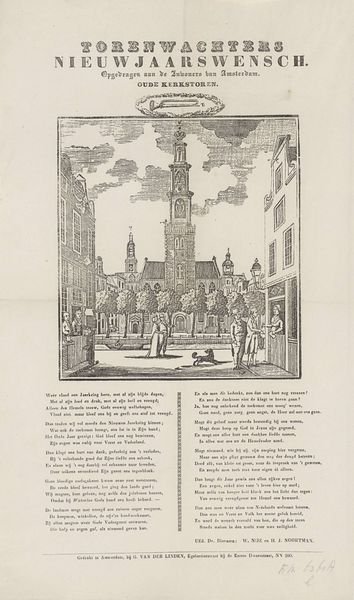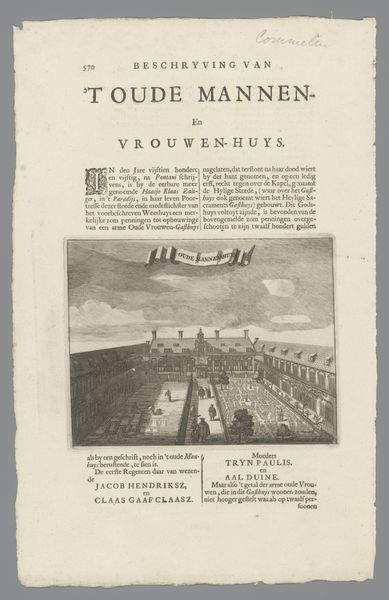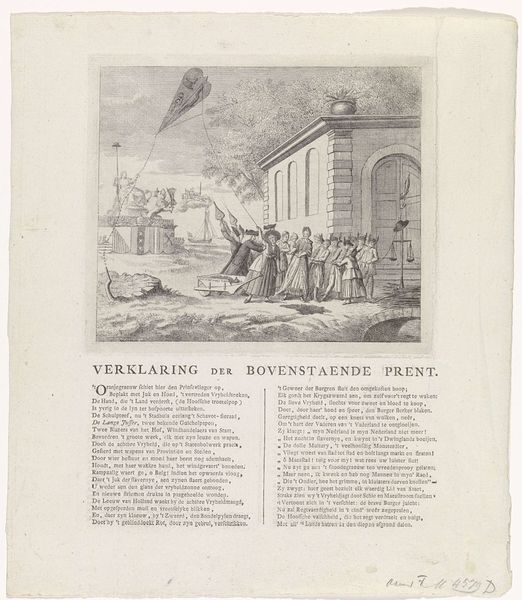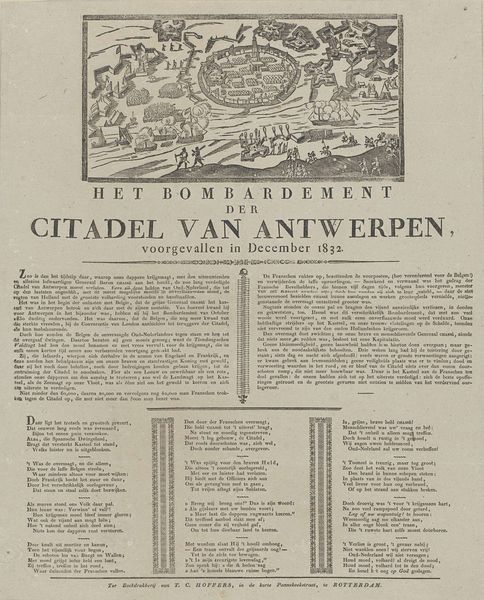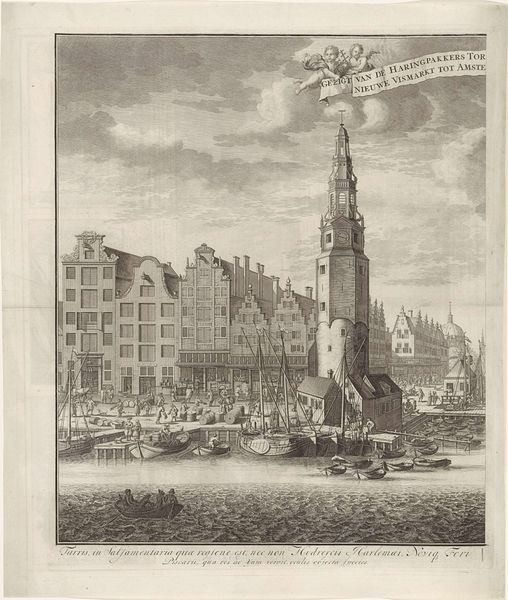
print, engraving
#
narrative-art
#
baroque
# print
#
history-painting
#
engraving
Dimensions: height 395 mm, width 296 mm
Copyright: Rijks Museum: Open Domain
This print from 1672, by an anonymous artist, held at the Rijksmuseum, depicts the desecration of the bodies of the brothers de Witt. The most striking symbol is the literal dismemberment of the bodies, an act that extends beyond physical violence to a symbolic obliteration of their influence and legacy. This act of publicly mutilating corpses has roots stretching back through antiquity. The act of defiling a corpse is a potent symbol of dehumanization and ultimate defeat, intended to strip the deceased of honor and memory. The image resonates with ancient practices of damnatio memoriae, where the erasure of a person from public record was meant to ensure they were forgotten. Consider how, in ancient Egypt, the destruction of a pharaoh's cartouche was intended to erase their existence from history. The psychological weight of such actions lies in the fear of oblivion and the desecration of what remains. The collective memory of such images serves as a stark reminder of the cyclical nature of power and the brutal means by which it is often maintained. The act resurfaces, evolves, and takes on new meanings, yet the core intent remains chillingly consistent throughout history.
Comments
No comments
Be the first to comment and join the conversation on the ultimate creative platform.
